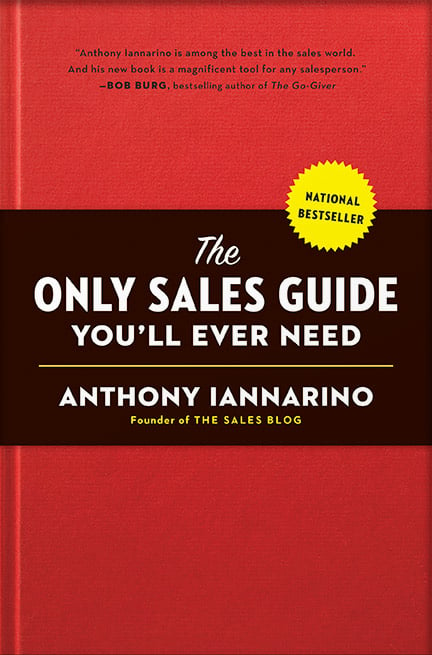The Gist:
- Because you help your clients produce better results, you are certain to have more insights and a better perspective about what they need to know.
- There are certain gaps that salespeople using a legacy approach to sales will leave unaddressed.
- The more you help your client to make a good decision, the better your results.
Imagine something we might call a facilitated, needs-based buyer’s journey, with you as the facilitator. To help your prospective client, you have to provide them with the information and insights that will allow them to reach their goals at the end of that journey.


Why They Should Change
Whether your prospective client is already compelled to change or is not yet aware that their results are not what they could be, it’s important to help them understand why they need to change. When your prospect is already compelled to change, you provide the additional context and experience necessary for a better and more complete understanding of their current reality.
More often, however, you are going to find that your prospective clients are not yet compelled to change, believing that what they are doing is still effective. When this is true, it is often because your contacts are working from outdated assumptions and beliefs, guided only by their own experience. One of the ways you help these clients is by proactively helping them recognize the changes in their environment before they are harmed by the ground shifting beneath them.
Implications, Positive and Negative
We tend to think of implications as motivating clients to change, once we’ve shared the negative consequences of doing nothing. That is not exactly true; instead, we are motivated to move away from pain and towards pleasure. You may not have recognized this in Neil Rackham’s SPIN Selling framework. Following the S (situation questions) and P (problem questions), you find I (implication questions) and N (need-payoff questions). The implication questions are negative, but the need-payoff questions are positive.
This is just the carrot and the stick, even if we oftentimes lead with the stick to create movement towards the carrot. When your contacts don’t yet recognize the negative consequences they are careening towards, it is important that you help them understand the increasing negative consequences of the status quo, as well as the positive outcomes of changing course now.


How to Make a Good Decision
The legacy approach to B2B sales is focused on selling your solution. A modern approach to sales requires you to help your client make good decisions (one of the main strategies of a facilitated, needs-based buyer’s journey). So how do you enable good decisions?
To help your contacts make good decisions, you have to help them recognize the many factors they need to consider, including the different choices that are available to them, what they value, and what they may or not be able to execute. In the discovery phase of the conversation, teaching your clients to recognize these factors and the different models they are choosing from enables better decisions. Because you help your clients produce better results every day, your experience is incredibly valuable to your contacts.
How to Improve Their Results
The only reason your contacts are talking to you is because they need better results. They want—and need—to understand how best to go about improving their results in some area. Because there is always more than one approach to improving results, your clients need help recognizing and selecting from those options. But more than that, the client must make some real changes beyond selecting a solution and choosing a partner.
What makes one truly consultative has less to do with their ability to sell their solution and displace their competitor and more to do with their ability to help their prospective client make these changes inside their own company. Recognizing and identifying those changes is part of being a trusted advisor, one who can help clients produce the best results.


How to Manage the Buying Process
For some reason, we believe that our clients know how to buy what they need. It’s only when you realize that they don’t know, however, that you can help them understand the necessary conversations and decisions that go into a successful decision to buy. As B2B buyers often treat a complex buying decision as if it were a more transactional B2C decision, they need more help understanding “how to buy.”
The best evidence of this is found in the need for consensus, something that some of your clients may not recognize is necessary until it’s too late to do something about it. Others will pursue consensus only to end in a “no decision,” especially when they believe that “consensus” means that everyone agrees on everything.
Who Is Going to Make the Best Partner
The most important outcome for you as the salesperson, one who is helping facilitate your prospective client’s buyers’ journey, is to prove without doubt that you are going to make the best partner. The “why us” conversation that begins a legacy laggard approach to sales is entirely and utterly impotent when it comes to creating a preference to buy from, and work with, you.
Occasionally, as a consultative salesperson, you may have to refuse to help your client because it isn’t something you can do for them. When this is true, you are proving that you are the right partner for all of the problems, challenges, and opportunities for which you are the perfect partner.
This cycle doesn’t end. Instead, it is an upward spiral of increasingly better results (or at least, it could be). Your client needs to know what comes next, so you need to know what comes next for them. There is no better retention strategy than the creation of new value, an approach that eliminates the possibility of becoming apathetic, entitled, or neglectful.
Do Good Work:
- What do your prospective clients seem to need in the way of insights and perspective?
- How do you engage with your clients in such a way that you provide them the most help getting the knowledge they need to move forward?
- What is your obligation to your clients inside your sales conversation?








.jpg?width=768&height=994&name=salescall-planner-ebook-v3-1-cover%20(1).jpg)


